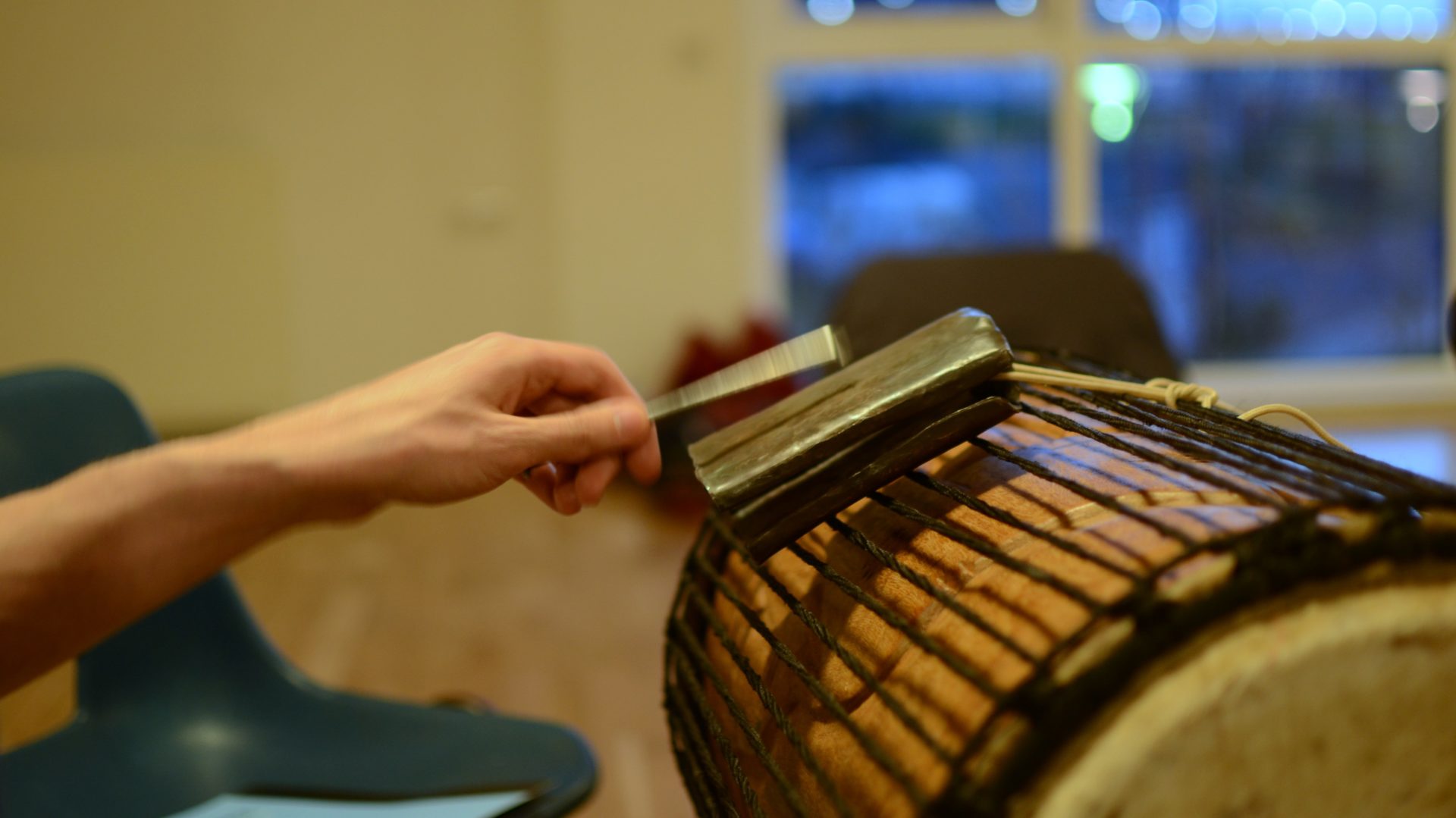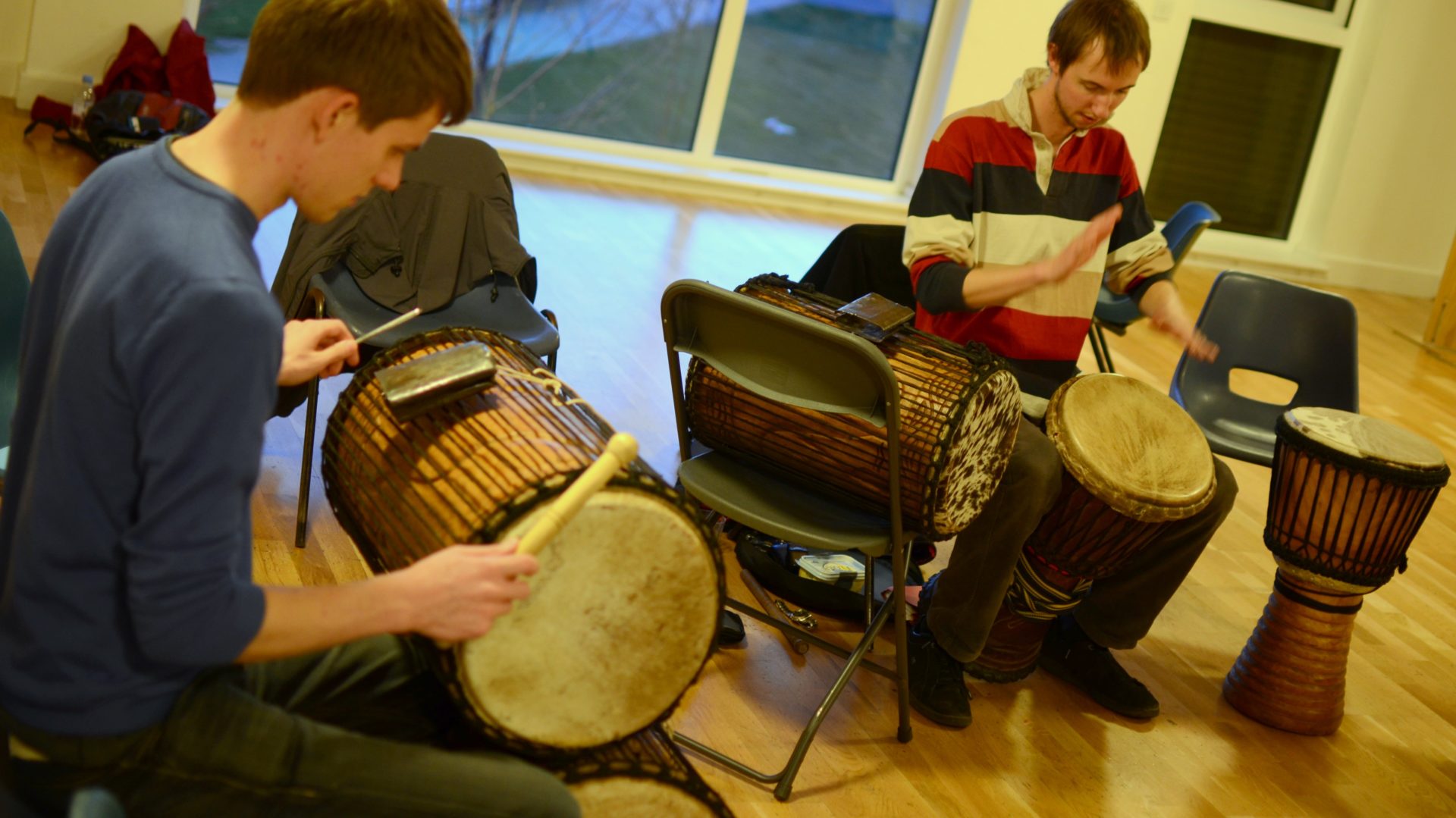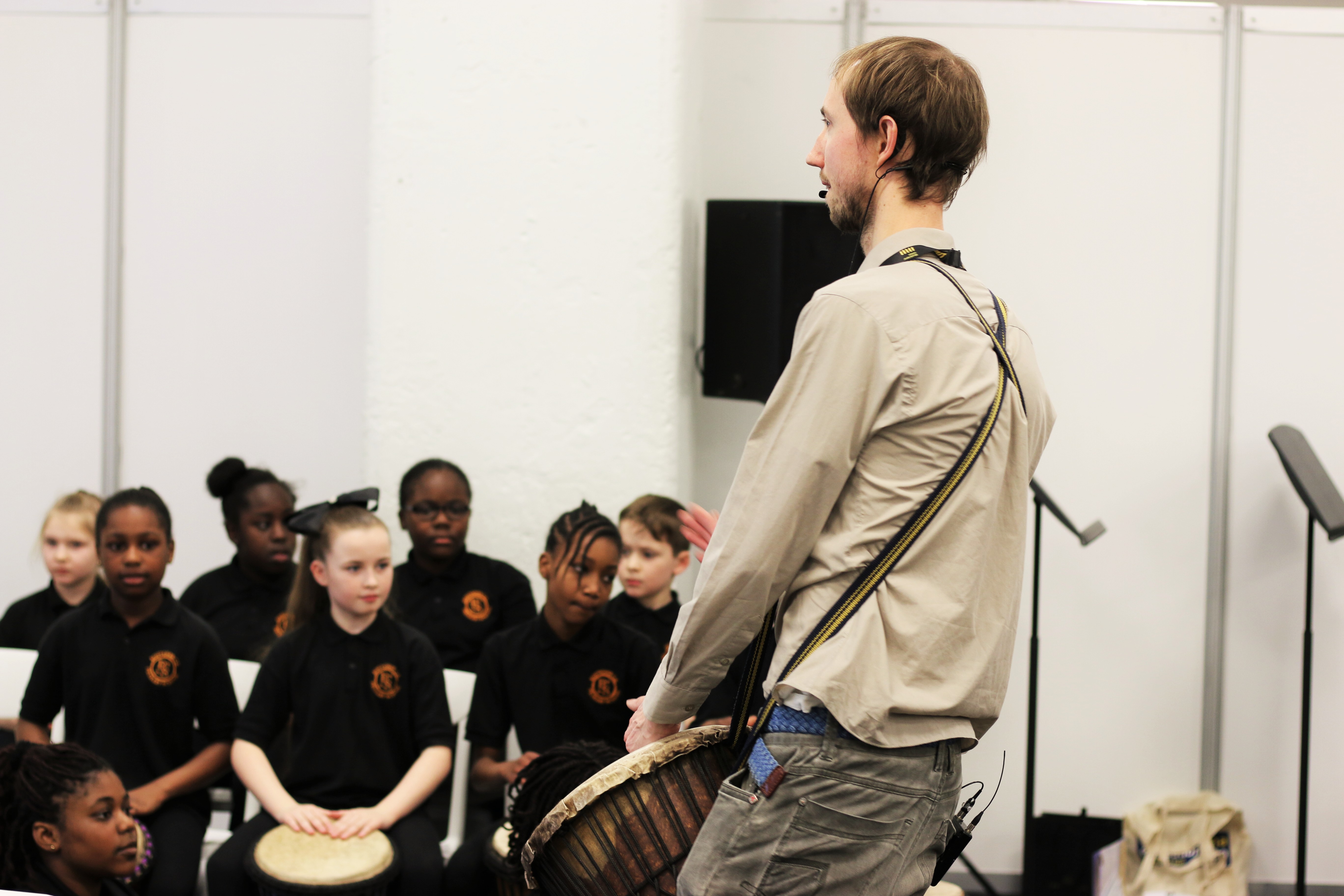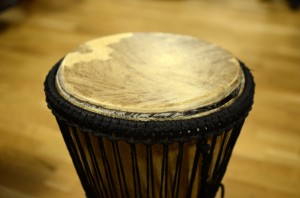
The djembe (pronounced JEM-bay) is one of the most versatile and widespread percussion instruments on the planet. Its huge popularity is down to the fact that it can create an unusually wide range of pitches, namely the bass (low), tone (medium) and slap (high). These sounds are created by striking different areas of the djembe skin with the hands.
Its Origins
The djembe drum is said to have been invented in the 12th Century by the Mandinke tribe in what is now Mali, in West Africa. It has been played by West Africans for generations forming an integral part of ritualistic life in Mali, Guinea, Senegal and other neighbouring West African countries.
Its Design
The djembe has a very unique and distinctive design, which is fundamental to its versatile sound. The “goblet-shaped” body of the drum is carved and hollowed out of a single piece of tree trunk. The Mandinka people traditionally used wood from Lenge trees, which held great spiritual importance for them while also lending the drum its resounding acoustic.
The large bowl-shaped chamber in the upper part of the body creates low resonance for the bass strokes (struck by the whole hand in the middle of the drum), while the narrow elongated lower section helps project the volume of all tones.
The head of the drum is traditionally made from goat skin, providing the djembe with piercing high-pitched tone and slap sounds (struck by the hand near the edge of the drum) owing to the thinness of goat skin (compared to antelope or calf-skin).
The shaved goat skin is lapped around a steel hoop and placed over the lip at the top of the drum. Another steel hoop wrapped with coiled-rope is placed on top of the skin-lapped hoop so that the tension of the skin can be adjusted by tightening or loosening the attached vertical ropes lining the outside of the bowl of the drum.
Tuning
In order to make a djembe sound good, the tuning of the skin needs to be fairly tight and, more importantly, even on all sides of the drum. If one side of the skin is significantly tighter than another then unwanted overtones will impair the crispness of the sound.
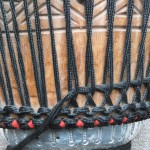
The tuning of the drum is achieved by using a double-hoop system in which a lower hoop, lapped with the goat skin head, is pulled down over the rim of the drum by an upper hoop, which is interlocked via a long vertically-winding rope with a smaller hoop just below the bowl of the drum.
Once the vertical rope has been pulled tight all the way around the drum it is tied off, and can be continued to be used by weaving horizontally between the ropes to increase the tension further. The horizontal rope is weaved behind and in front of the vertical ropes (various methods can be employed) so as to twist them into an “S” shape and increase the tension of the skin until the desired pitch is reached. The skin will naturally descend in pitch over time, so drummers regularly increase the tension on the skin by continuing to weave the horizontal rope all the way around the bowl of the drum until either the skin is so stretched that it is no longer usable, or the skin rips.
Sounds of the djembe
There are three main sounds that can be played on a djembe: bass, tone and slap.
The bass sound (low-pitched) is achieved by striking the drum in the middle of the skin with a heavy hand.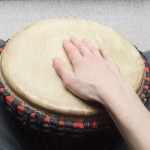
The tone (medium-pitched) is played with the hand on the edge of the skin, using the wrist as well as the arm to propel the hand towards the drum.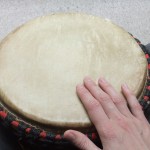
The slap (high-pitched) is technically the hardest stroke to achieve. There are many types of slap, all of which are played near the edge. Drummers from Guinea, Mali and other countries where the djembe is indigenous, slap slightly further out than the tone, with the fingers pointing as shown below.
The fingers should be completely relaxed and thrown towards the head of the drum by the arm and wrist. The best way to achieve the slap is through trial and error, and as every person’s hands are different so every person will have a unique sound on the drum.
Cultural context
The djembe has been an integral part of spiritual and ritualistic life in West Africa for many generations. It was traditionally only played by griots, well respected high-class court musicians, who used it for story-telling: passing on important historical, religious and cultural information to future generations. Griots were, and still are, respected as not just incredible musicians, but men of great knowledge, possessing centuries of wisdom passed down to them through their direct ancestors.
The drum is inextricably linked with singing and dancing, and any aspiring djembefola (djembe player) must also learn the accompanying songs and dance moves to the rhythms they perform. Various dances have different symbolic meanings, and are performed at important events such as festivals calling for rain or a good harvest, or at ceremonies like births, weddings and funerals.
Djembe drummers
Famous master-djembe players, called “djembefola”, include:
- Mamady Keita, from Guinea, who led “Le Ballet National Djoliba” from an early age;
- Famoudou Konate, also a Guinean master-drummer who led “Les Ballets Africains de la Republique de Guinee”;
- Adama Drame, a Griot from Burkina Faso, who directs the “Ballet Foliba”;
- Abdoulaye Diakite, from Senegal, djembefola with “Ballet National du Senegal“;
- Soungalo Coulibaly, a Malian master-drummer who made his name in Cote d’Ivoire.
Suggested Listening
Albums that are worth listening for an introductory overview of West African djembe music include:
- Mamady Keita: Wassolon, Nankama
- Soungalo Coulibaly: L’Art du Djembe
Suggested Documentaries
“Djembefola“, following Mamady Keita as he returns to his native Guinea

